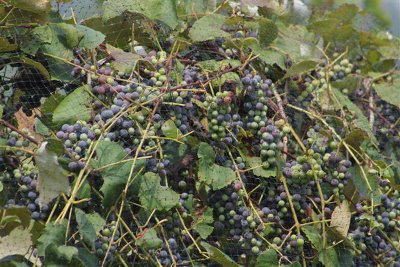Niagara Grape (Vitis labrusca)
Category: Shrubs

The Niagara grape is also known as Vitis labrusca. It is considered to be a cross breed of Concord and Cassady grapes. It is a cold hardy, deciduous grape plant which is known for production of juices in America. The deciduous plant is woody and has tendrils which can grow up to about fifteen to twenty inches long if not pruned. It is a fast growing plant which requires regular pruning in order to keep it healthy. It is known to live for many years, and under good conditions, it can live producing fruits up to twenty years. The plant is also referred to as the white concord sometimes due to its similarity in productivity, extreme hardiness and vigor.
The Niagara grape vine is a self pollinating plant which has shallow- three-lobed, large green foliages with fragrant flowers that area green in color. These flowers are produced in spring. After the flowers, are the seedless white, to greenish-white colored grapes. These grapes are medium to large in size, round to oval in shape, juicy and have a pleasant aroma. Its pleasant flavor is sometimes described as 'foxy'. The grapes usually grow in clusters and are considered to ripen in early September.
The Niagara grape can do well in USDA zone of five. It requires deep, moist to well-drained loamy soils and in full sun. However, they can be tolerant to various soil conditions with good drainage. Growing vines require to be protected from frost pockets and strong winter winds.
In order to establish the plant and to obtain maximum production of grapes, it requires training to a particular system, support systems, pruning and regular spraying. It is also important to frequently weed the bases of the vines to remove stick and leaves. This can help the vines to fight off pest and rot.
The Niagara grapes are primarily grown for grapes which are used to produce juices, jellies, jams and wines. However, when these vines are planted on walls, trellis, arbors or fences, they can provide good shade, cover or screening to areas around homes.

 Back To Category Shrubs
Back To Category Shrubs